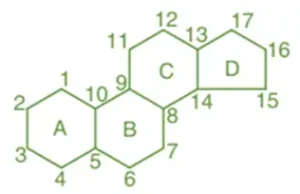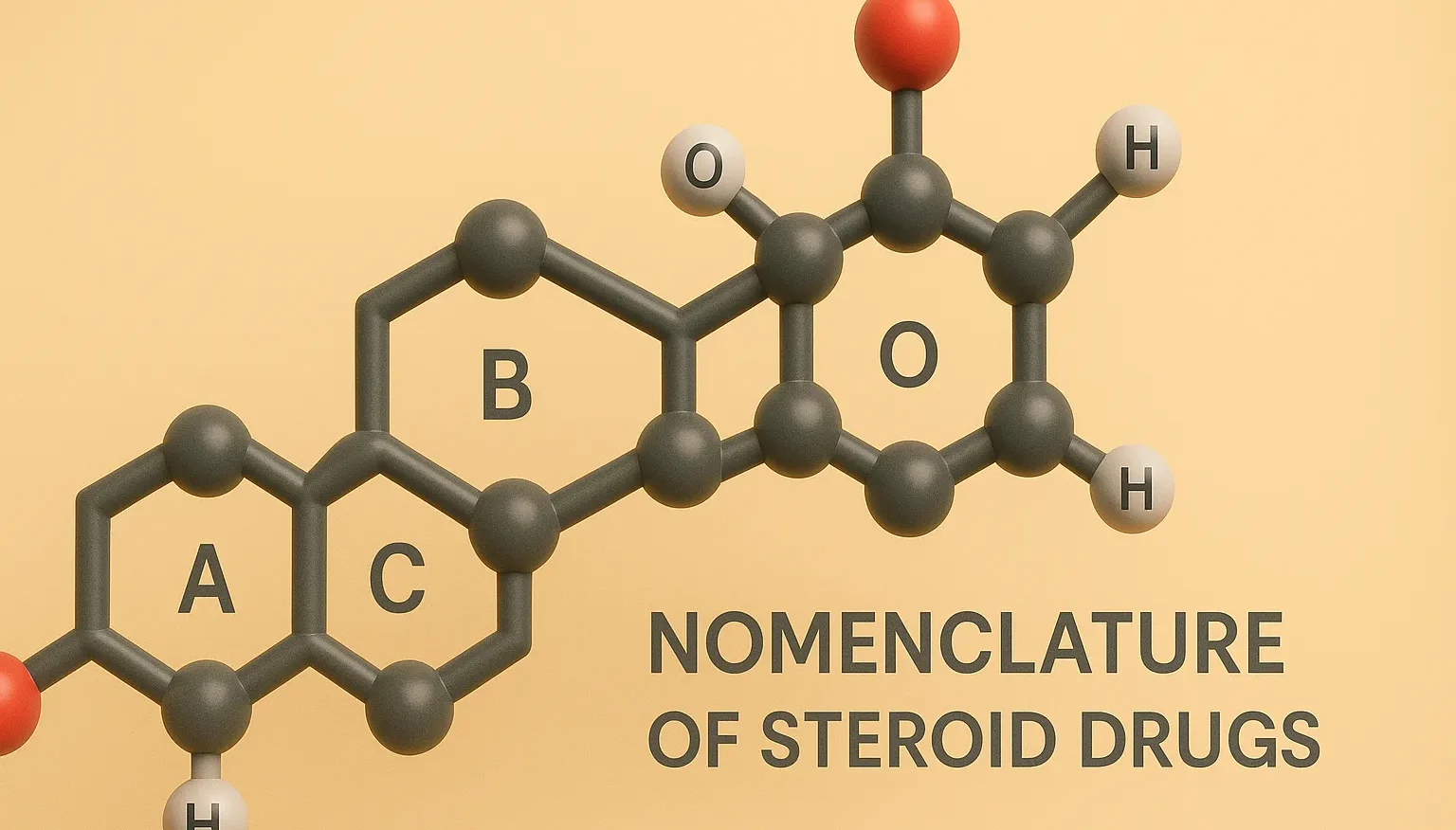Nomenclature of Steroid Drugs is essential for understanding the classification and identification of various steroid-based medications. The nomenclature of steroid drugs follows a systematic approach based on their chemical structure, functional groups, and modifications, ensuring clear communication in pharmaceutical science and clinical practice.
Steroid Structure Basics:
Core Structure:
- Steroids share a common tetracyclic structure composed of three cyclohexane rings (A, B, C) and one cyclopentane ring (D), known as the steroid nucleus.

Functional Groups:
- Variations in functional groups attached to the core structure differentiate steroid types.
Advertisements
Naming Conventions:
Prefixes and Suffixes:
- -olone: Indicates a ketone group (e.g., Testosterone).
- -ate: Ester forms used in prodrugs (e.g., Prednisone).
- -olone vs. -ol: -ol denotes alcohol groups (e.g., Etonogestrel).
Classification-Based Names:
- Glucocorticoids:g., Hydrocortisone
- Mineralocorticoids:g., Fludrocortisone
- Androgens:g., Dihydrotestosterone
- Estrogens:g., Estradiol
- Progestogens:g., Progesterone
Examples:
- Corticosteroids: Prednisone, Dexamethasone
- Anabolic Steroids: Nandrolone, Oxandrolone

